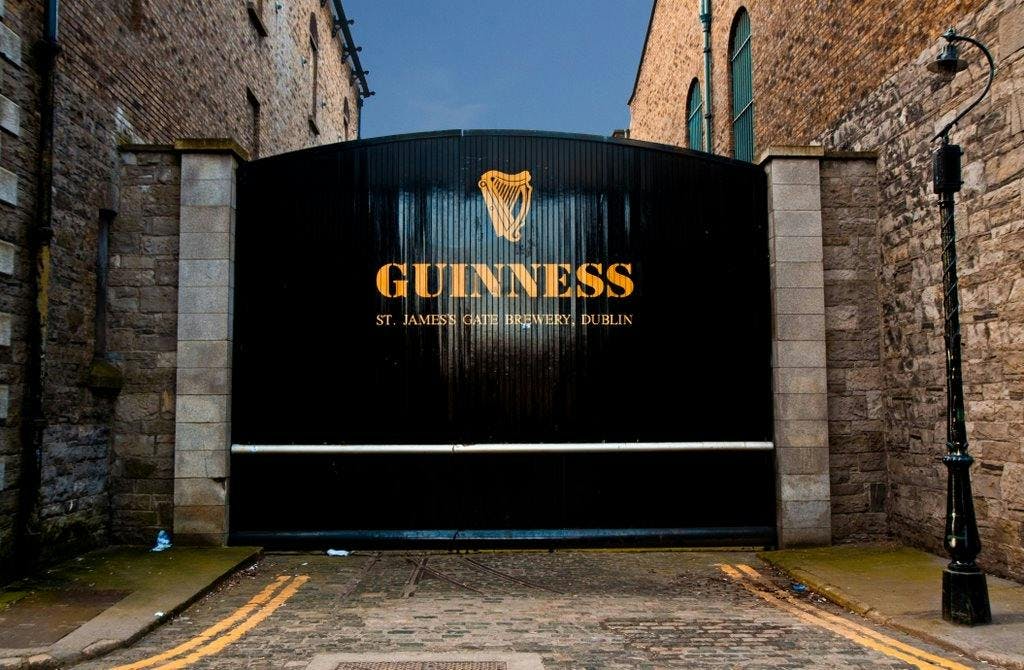Total flexibility, no commitment
A world of unique, crafted gins
Easy, free and reliable delivery

FOUR THINGS YOU THINK ARE IRISH BUT ACTUALLY AREN'T. YES, EVEN GUINNESS!
Below is an excerpt from GINNED! Magazine about Blackwater Distillery's Nº 5 London Dry Gin. Every month, Craft Gin Club members receive a bottle of amazing small-batch gins accompanied by GINNED! Magazine which is full of features about the gin, the distillery and loads of fascinating features.
Things aren't always what they seem. With St. Patrick's Day just around the corner, here are a few things you immediately associate with Ireland but aren't necessarily Irish.
ST PATRICK
The flowing green robes. The walking stick. The ever-present crosses. All associations we immediately identify with St. Patrick, Ireland’s most famous missionary and at one point bishop. It is rumoured that St. Patrick rid the island of snakes, made Ireland a Christian domain and baptized up to one hundred thousand of his fellow Irishmen. But here’s the prickly point - those that the 5th Century man we commemorate with raucous abandon today weren’t actually his fellows, for St. Patrick did not originally hail from Ireland. There are differing theories about whether he was born in England, Scotland or Wales, but there is a consensus that he was definitely not born in Ireland. And also that he led quite the adventurous life.
Not religious as a young man despite being the son of a deacon, Patrick was captured by Irish pirates and enslaved in Ireland for six years. During these hard times, he turned to religion, even having spiritual visions including one that told him where to find a ship back home. A few years studying in Europe and eventually rejoining his family, his visions continued, primarily one that of a saint bringing him a letter entitled “the Voice of the Irish.” That vision prompted him to return to Ireland where he set to converting the pagans to Christianity.
Stories of Patrick employing the shamrock as a representation of the Holy Trinity and chasing the snakes out of Ireland are likely just that - stories. But scholars are fairly certain of the day of his death - March 17th, c. 493 A.D. - a day celebrated around the world over 1,500 years later and one that inextricably links Saint Patrick to Ireland.
GUINNESS
The Guinness Brewery at St. James’s Gate in Dublin has stood proudly since 1759 as a bastion of Irish culture and an embodiment of Irish culture. But it’s highly likely that the dark stout that has found popularity around the world as a symbol of Ireland is not Irish at all. Signs increasingly point to the beer’s origins as Welsh.
At one point as a young man, Arthur Guinness, the Irish entrepreneur behind the brewery’s 18th Century launch, traveled to London where he took a liking to the black porters of the day. Legend has it that on his way back to Ireland Arthur’s convoy carried varieties of porter from London to Holyhead on Anglesey, the point in Wales from which boats embarked to Dublin, perhaps tasting and picking up additional local ales along the ground route.
This loaded journey is contested by Welsh historian Deiniol ap Dafydd who believes that to reach Holyhead on Anglesey carrying casks of liquid would have proved impossible at the time seeing as any travelers would have had to cross the mountains in what is today the national park of Snowdania. Instead, Dafydd posits that one of Guinness’ last stops before boarding the boat to London was near the Welsh town of Llanfairfechan where a building known to have been a tavern that brewed a black ale stands to this day. The building’s name? “Gwyn du”, the Welsh for “black wine”.
In explaining his findings, Dafydd told the Observer, “My view is that Mr. Guinness tasted a whole range of local brews on his journey between London and Holyhead, but it was the black wine that took his fancy. It is what was to become Guinness.” The good people at St. James’s Gate have not been able to disprove Dafydd.
So when you’re drinking a pint of Guinness stout this St. Patrick’s Day, remember that what you are drinking was spawned from the ambition of an Irishman, but likely from the recipe of Welshmen.
GREEN BEER
“Everything possible was green or decorated with that color, and all through the banquet Irish songs were sung and green beer was served. No, it wasn’t a green glass, but real beer in a regular colorless glass, but the amber hue was gone from the brew and a deep green was there instead.”
This article from the Evening Independent newspaper’s March 26, 1914 edition recounts the tale of what appears to be the world’s first instance of green beer. But the Independent was not an Irish paper and the green beer of which it speaks was not found in Ireland. Rather, the rag called New York home and the beer it describes came from the Schnerer Club, a gentlemen’s club whose “membership is composed of the leading public and professional men of Greater New York,” according to the paper.
The tinted tipple inventor’s name was Dr. Thomas Curtin who used “wash blue,” a type of dye of the day used to color fabrics. Little did Curtin know that his dyed drink sparked a celebratory trend that has pervaded St. Patrick’s Day since, albeit mostly in America.
There is even a Green Beer Day feted by the Miami University in the state of Ohio. Conceived as an excuse that St. Patrick’s Day normally falls during the school’s Spring Break, students start drinking green beer as early as the wee hours of the morning with the university town’s bars opening at 5 am to accommodate the jade jokers.
ST. PATRICK'S DAY PARADES
With St. Patrick the Patron Saint of the Emerald Isle, you’d think that all celebrations of March 17th originated in Ireland. We excuse your erroneous assumptions, however obvious they seem.
St. Patrick’s celebrations in Ireland were traditionally a more sombre occasion dating back to at least the 7th Century when St. Patrick first gained his status as Ireland’s saint. The feast day was recognized by the Roman Catholic Church as far back as the 17th Century and eventually became a holy day of obligation for the Irish, a day that gradually transformed into a celebration of typical Irish fashion - with copious amounts of whisky and Guinness.
When March 17th became a bank holiday in Ireland, an MP pushed a law through requiring all pubs to close during what was meant a day of Christian solemnity, a law that thwarted would-be green revelers from publicly imbibing until its repeal in the 1970s. It wasn’t until during this sober period, in 1931, that Ireland held its first official St. Patrick’s Day Parade, just shy of 200 years after the first parade organised in 1737 by Irish immigrants to Boston with the first - and now world renowned - New York City Parade starting in 1762 with Irish soldiers of the British Army.
US-based St. Patrick processions gradually gained steam through the 19th Century eventually spreading to the rest of the world, demonstrating the global breadth of the Irish diaspora.







